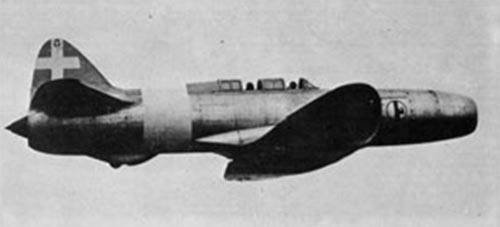During the Second World War, Germany was considered to be the first nation in the world to utilize the use of jet-powered airplanes in their campaign. This was later followed by Italy who achieved jet-powered flight through the introduction of their N1 (also known as the CC.2) aircraft.
The N1 (CC.2) WW2 aircraft was created through the merging of the design of Secondo Campini with the capability of production by the Caproni aircraft firm. Although, Italy was awarded the distinction of being the second nation to use jet-powered technology, their WW2 aircraft did not leave a significant contribution to both the jet-age technology and their losing war campaign. The N1 (CC.2) however boasted of an interesting combination of old and new technologies. This WW2 Italian aircraft featured a basic piston propulsion engine that utilizes a fan compressor system for added fuel combustion. This made the N1 to have an afterburn characteristic.
The N1 (CC.2) model was designed as a large aircraft that can accommodate a crew of two-personnel. It was traditionally designed as a low-wing monoplane with a single vertical tail surface. An open intake was located in the extreme forward position while the extreme rear has an exhaust that could be jettisoned during flight. This WW2 aircraft also featured fully retractable landing gears and had straight-wings. Since it was not a full-blown turbojet aircraft, the power of the N1’s lone piston engine can only allow it to achieve a top speed of 233 miles per hour.
The N1 was a plane that was mostly used to demonstrate jet technology rather than become a practical fighter plane. Because of this, this WW2 Italian aircraft was never fitted with armaments. In effect, the N1 (CC.2) did not do much for the Italian war campaign except proving the concept of jet propulsion and bringing Italy closer to the jet-age technology.
SPECIFICATIONS
| Allied Codename: | none |
| Type: | two-man crew WW2 airplane |
| Design: | Caproni Aircraft Firm |
| Engine(s): | 1 x 900 HP Isotta-Fraschini radial piston engine and driving a three-stage ducted fan compressor system |
| Max Speed: | 375 km/h |
| Ceiling: | 13,123 feet |
| Length: | 42.98 feet |
| Wingspan: | 52.00 feet |
| Empty Weight: | 3,640 kg |
| Loaded Weight: | 4,195 kg |
| Armaments: | none |
